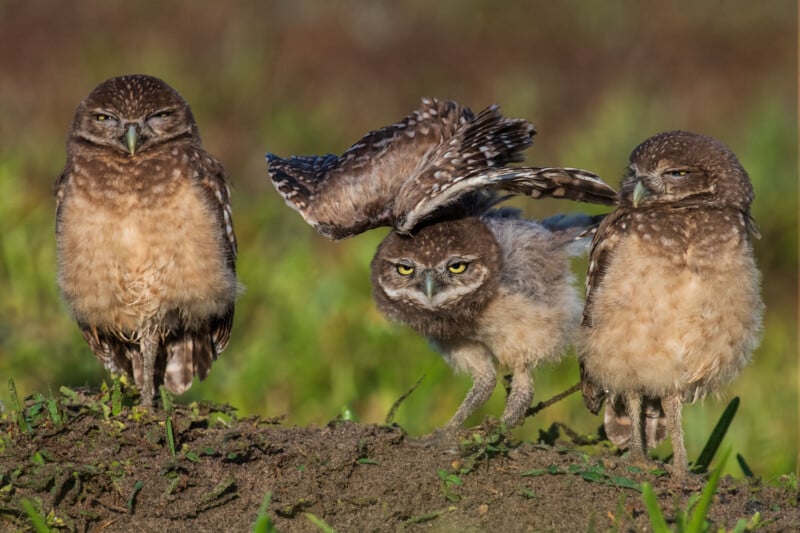
Cape Coral, Florida, a city experiencing unprecedented growth. While great for their economy, the economic boom is disastrous for wildlife, especially species that thrive in open, treeless areas. In particular, the burrowing owl population is suffering as its habitat shrinks.
The burrowing owl is currently designated by the state as “threatened,” and this small bird is an essential part of the ecosystem and deserves our protection.
These owls, typically found in flat, prairie-type land, have had to adapt to survive in neighborhoods, next to sidewalks, near construction, and other manufactured structures that all come with their own threats. This proximity to humans leaves them vulnerable to passing cars (they are low-flying), household pets, and their food supply (mice) being contaminated with pest control agents.

Thus, the Cape Coral Friends of Wildlife hopes to prevent the further decline of this unique ground-dwelling bird by pushing for citizen intervention: caring citizens must dedicate space in their yards as habitat and welcome burrowing owls in as neighbors through “Starter Burrows,” which they will start themselves (or with the help of CCFW). This program offers no monetary incentive and is done solely through compassion.
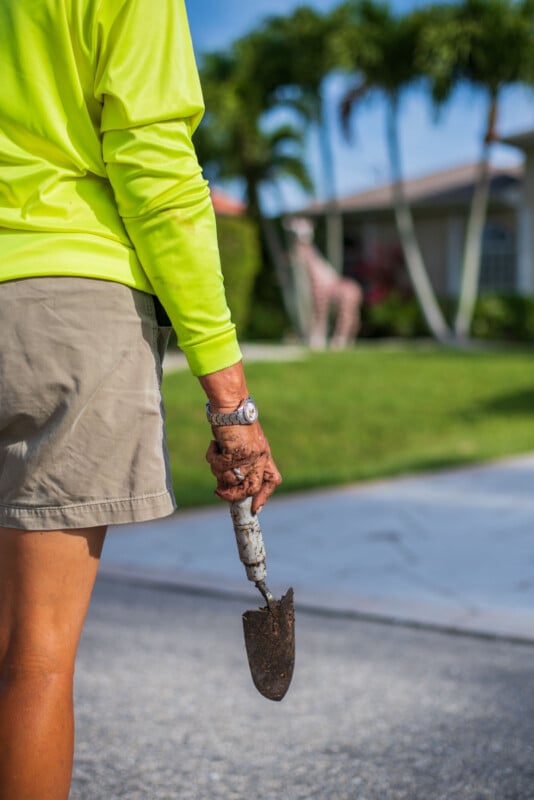
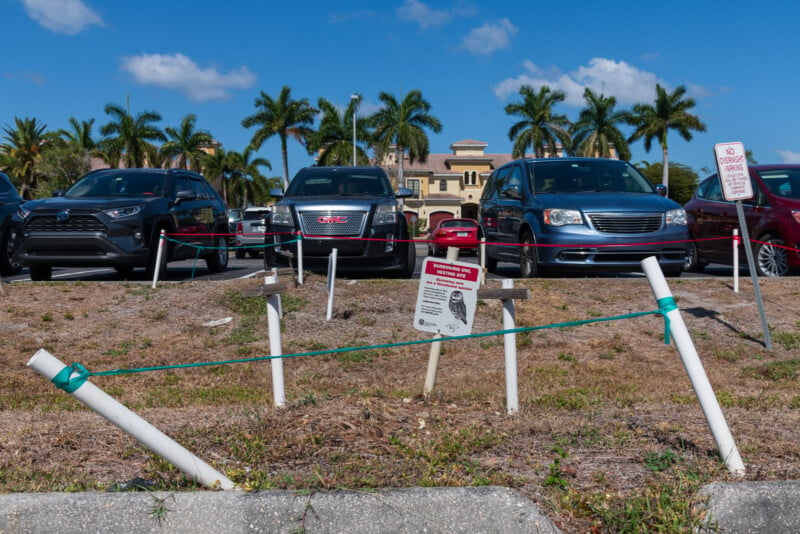
Since this city holds the largest population of the Florida burrowing owls, it’s vital to maintain the owl’s numbers in Cape Coral.
Outside of the human-related threats, these owls also face catastrophic natural events, such as the recent Hurricane Ian. Being ground dwellers, they face immense challenges with flooded burrows and land destruction.
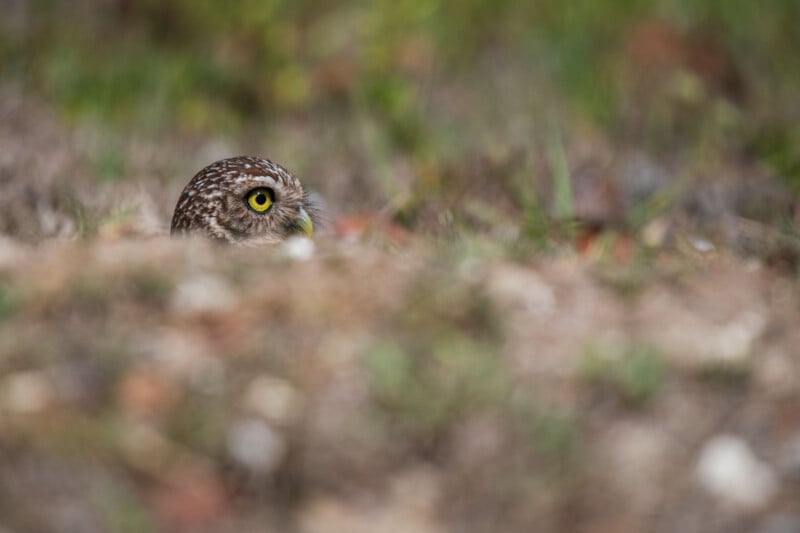
A strong bond between the city’s residents and the population of owls that call Cape Coral home is essential to these owls, and it seems a lot of Cape Coral residents are willing to step up to the task, and hopefully, they continue to do so.

I went to Cape Coral to photograph the story of the threatened burrowing owls and how the people of Cape Coral work to protect their feathered neighbors.
The Challenges of Urban Wildlife Photography
One of the most challenging aspects of photographing urban wildlife is navigating around a lot of private property. In instances where you may move to get a better background, you may not be able to due to a private yard, a structure blocking your mobility, or a busy road restricting your movement. These owls live in condensed neighborhoods and I had to pass on many shots to avoid trespassing. And some locals may feel as though you’re intruding, even when in public spaces.
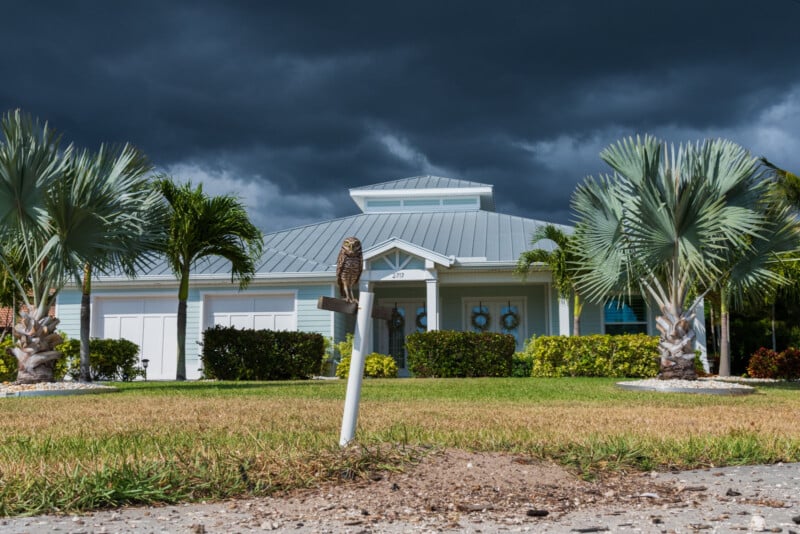
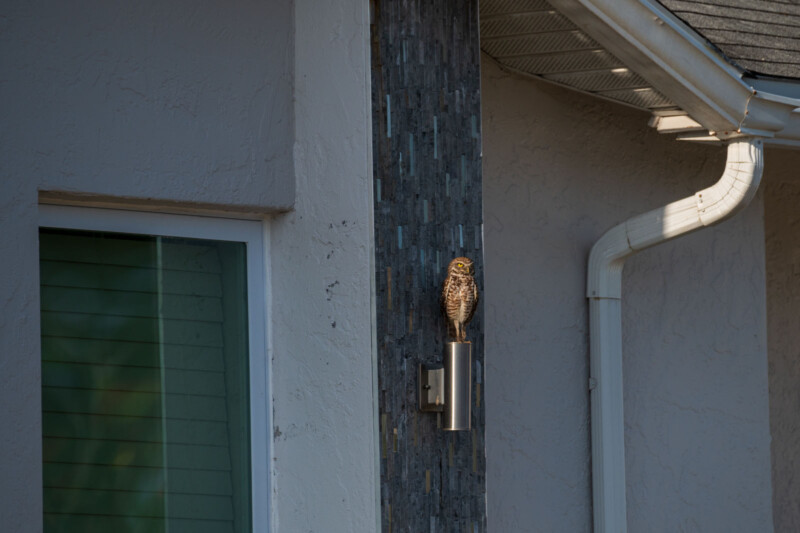
Your background also presents issues. For example, if you want to achieve a blown-out background you may not be able to due to not being able to get enough separation between your subject and what’s behind it. A good rule is to have less distance between you and your subject than your subject and the background to get a nice separation.

And even when you want to stop down to show the background for story purposes, there just may be too much clutter in the frame leading to your subject being lost and your photo turning into a “find the subject” game.
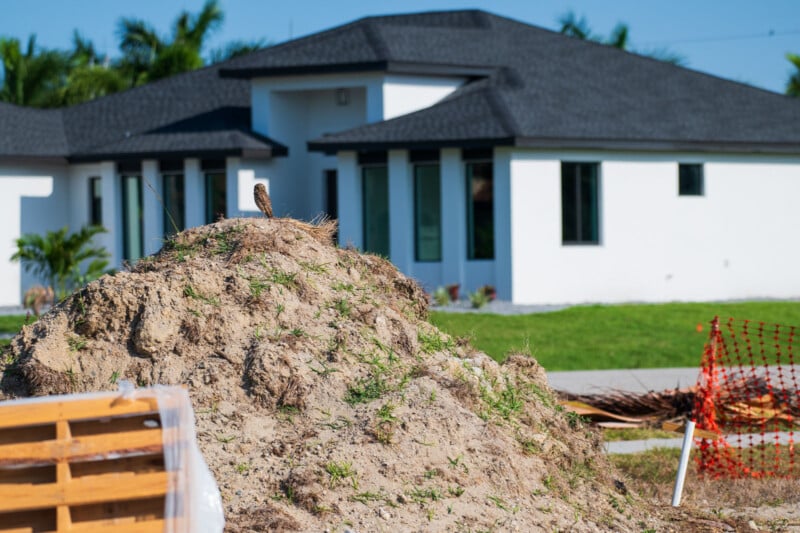
Since my goal was to tell a story, not only the owls matter, so too does their environment. While scouting I memorized areas in which I could shoot either a tight comp with a clean background or an environmental shot stopped down and assessed where I needed to be for the light in each area.
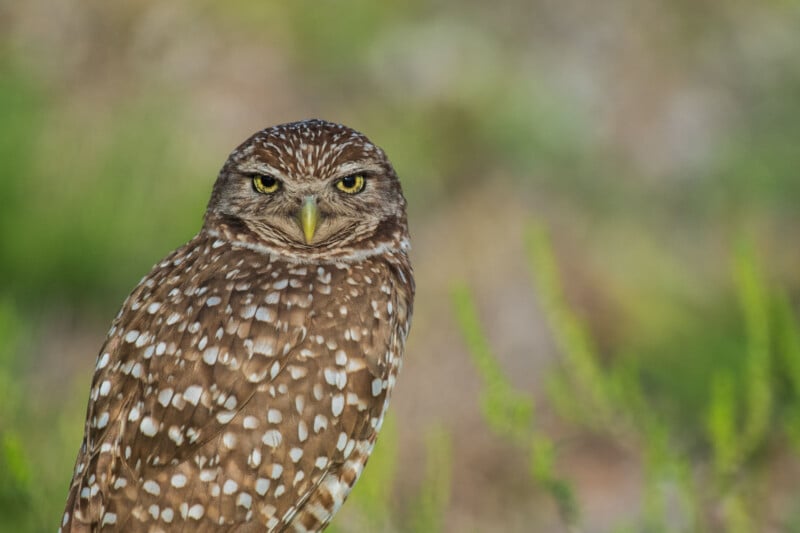
Stopping down to achieve a compelling background that showed the whole story was a necessity. At times I shot at f/11 especially when multiple owls were in the frame and the background was a key element of the shot. Luckily, the harsh Florida sun aided in this as I didn’t need to change much else and could keep my shutter speed relatively high.
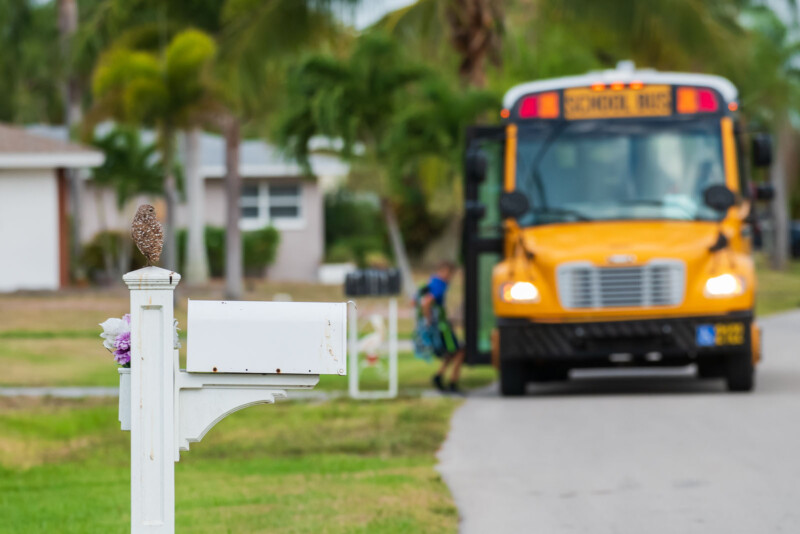
Finding Urban Wildlife Near You
Using local resources and local residents is a major part of finding wildlife in urban environments. Who knows your neighborhood better than you? Getting in contact with local wildlife groups or rehab facilities can generate great leads as they are usually the ones interacting with locals who care about the wildlife. And don’t underestimate the power of a large telephoto lens in generating leads, sometimes all you need to do is walk around with it in your hand.
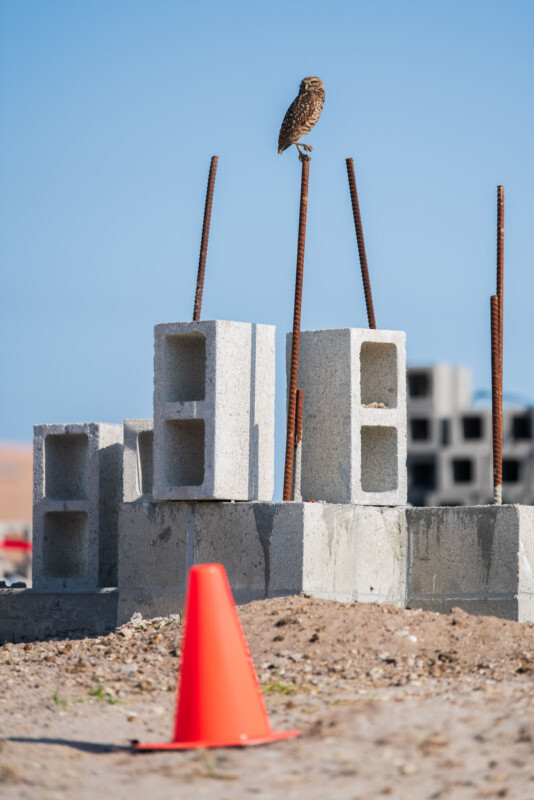
Certain animals adapt to living in urban environments differently. Some learn to avoid people better and some become indifferent, all of this on a spectrum. Here specifically, I encountered owls that were nested right next to a sidewalk, and they were very tolerable to people walking, biking, and driving by. This allowed me to get photos of these owls that, in other circumstances, would have been hard to achieve without disturbing them to some extent.
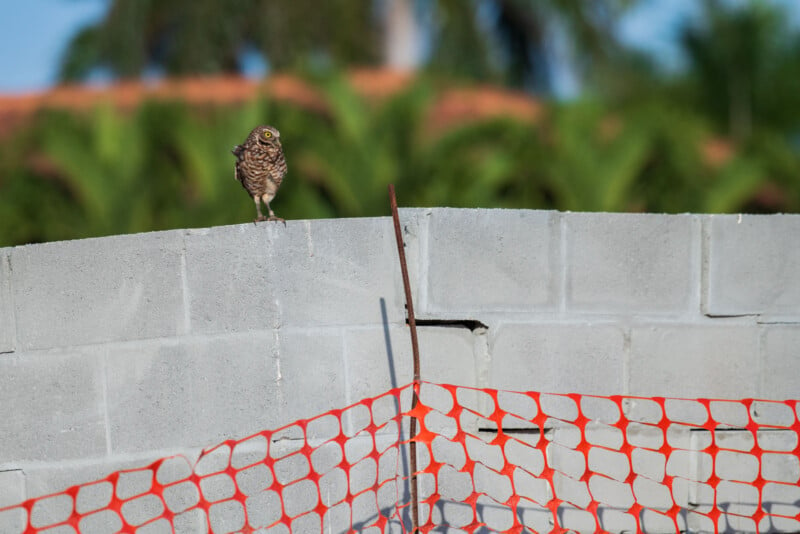
Not even a mile down the road a pair on a large vacant lot would start to vocalize when I would get within 25 yards showing they were more on edge with a human presence. Everything is individual, and you must adjust and adapt to them accordingly. Going out in the field with specialists or those who work intimately with the species can help aid you in assessing behavior and keep both the wildlife and yourself safe.
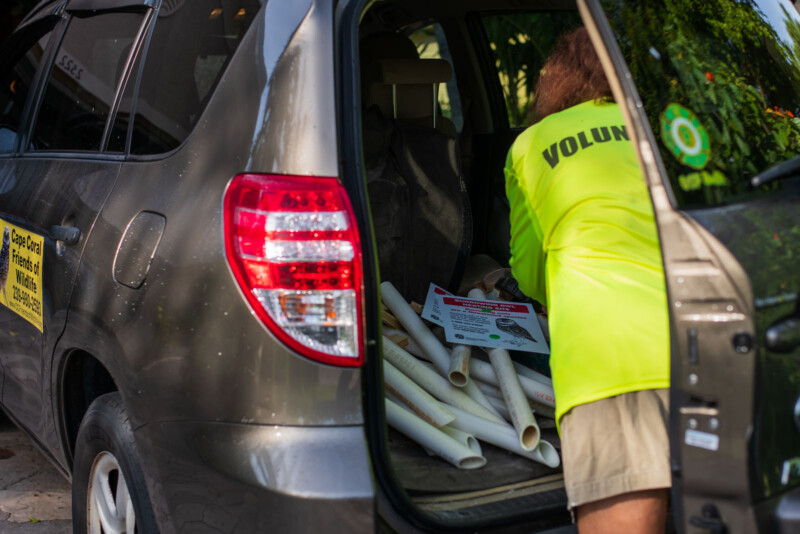

The Power of Visual Storytelling in Conservation
Imagery is an important piece of getting the local community to connect with the wildlife they share space with. They may not even realize how important the population of animals they see is because they are so used to them being there. Burrowing owls are listed as threatened in the state of Florida, and because the largest population is in Cape Coral, the owls there are vital to the overall number of burrowing owls. Seeing them closer and exhibiting behavior that people can connect with may change their outlook on them and inspire them to protect them.


Photography is absolutely essential in environmental and wildlife conservation as it is a vehicle for connection. Photographs allow us to connect with people, animals, and places that we may never see in person. And that’s powerful!
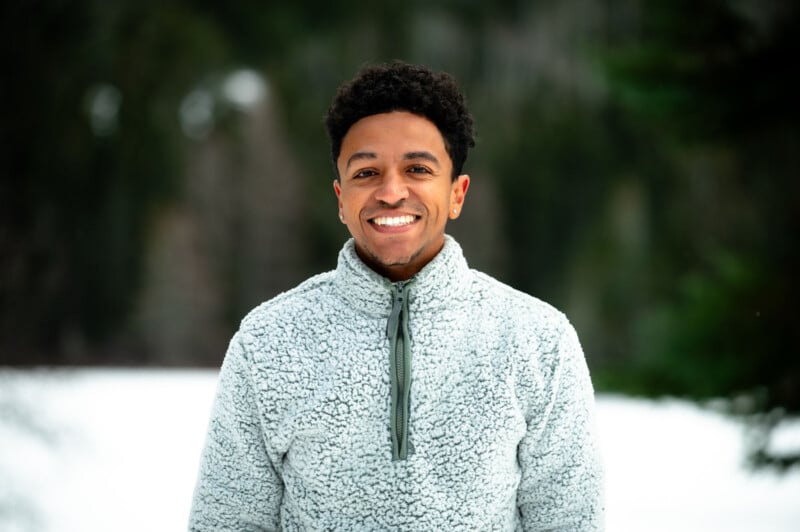
About the author: Devon Matthews is a wildlife photographer and up-and-coming conservation storyteller out of Minnesota. His goal is to tell stories with his photos that will leave readers feeling a deeper connection to wildlife and the outdoors. Whether it’s an animal across the world in its environment or an insect that you can find in your backyard, he wants to leave you with a new and deeper perspective on life and the beauty that our planet holds.
To see more of his work you can visit his website and follow him on Instagram.
